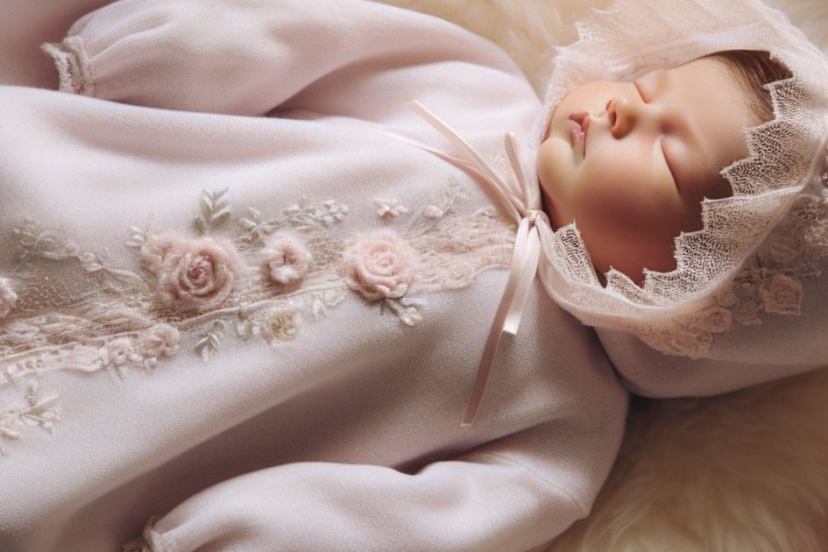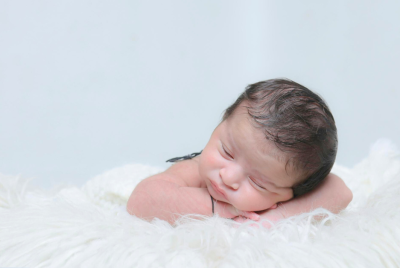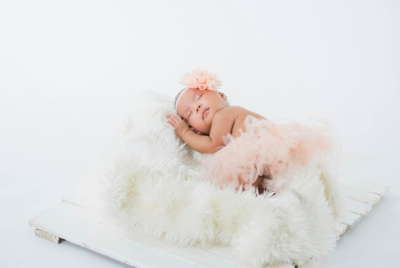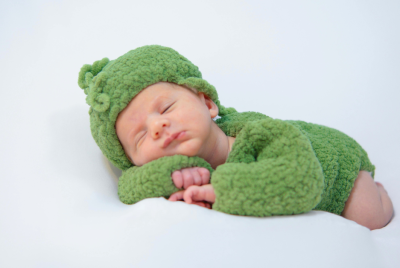The Ultimate Guide to Baby Sleeper Gowns: Comfort and Convenience for Your Little One
Introduction
Understanding the Importance of Baby Sleeper Gowns
As a parent, I’ve come to appreciate the significance of baby sleeper gowns in my little one’s wardrobe. These cozy garments offer a comfortable and convenient option for bedtime and diaper changes.
How Sleeper Gowns Differ from Traditional Baby Clothing
Unlike traditional baby outfits with snaps or buttons, sleeper gowns feature an open bottom, allowing easy access for diaper changes without the hassle of undressing the baby completely. They also provide a snug yet gentle fit, promoting better sleep for my little one.
Choosing the Right Baby Sleeper Gown
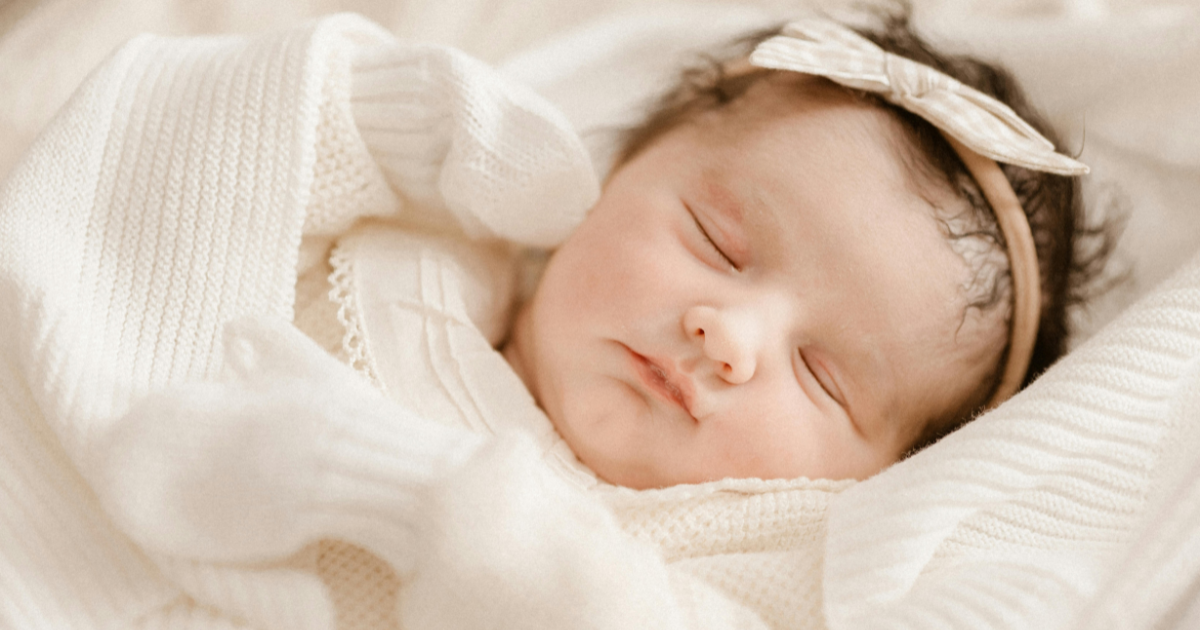
Factors to Consider
When selecting a baby sleeper gown, there are several important factors to keep in mind to ensure your little one’s comfort and safety:
Fabric Type:
Opt for fabrics that are soft, breathable, and gentle on your baby’s delicate skin and promote baby sleep. Look for materials like organic cotton, bamboo, or fleece, which provide warmth without overheating.
Size:
It’s essential to choose the right size sleeper gown for your baby. Aim for a snug yet comfortable fit that allows room for movement without being too tight. Consider sizing up if your baby is between sizes or if you prefer a looser fit.
Design:
Look for sleeper gowns with thoughtful designs that make diaper changes easier. Features like envelope necklines and elasticated bottoms allow for quick access without fully undressing your baby. Additionally, consider sleeve lengths and closures that suit your baby’s needs and your preferences.
Safety Features:
Ensure that the sleeper gown you choose meets safety standards to prevent any potential hazards. Check for secure closures, such as snap or button fastenings, and avoid any decorative elements that could pose a choking risk. Opt for flame-resistant fabrics for added safety during sleep.
By considering these factors, you can confidently choose a baby sleeper gown that provides both comfort and convenience for your little one.
Top Material Picks for Baby Sleeper Gowns

When it comes to choosing the best material for baby sleeper gowns, there are several options to consider. Here are my top 10 picks, along with their advantages and disadvantages:
1. Organic Cotton
Advantages:
1. Softness:
Organic cotton is gentle on baby’s sensitive skin, providing a cozy and comfortable feel.
2. Hypoallergenic:
It’s less likely to cause irritation or allergic reactions, making it suitable for babies with sensitive skin.
3. Breathability:
Organic cotton allows air to circulate, helping to regulate baby’s body temperature and prevent overheating.
4. Environmental Friendly:
It’s grown without the use of harmful pesticides and chemicals, reducing environmental impact.
5. Durability:
Organic cotton sleeper gowns tend to be more durable and long-lasting compared to conventional cotton.
Disadvantages:
1. Cost:
Organic cotton products may be more expensive than conventional cotton options.
2. Limited Color Options:
Organic cotton is often available in fewer color choices compared to synthetic fabrics.
3. Shrinkage:
Organic cotton may shrink slightly after washing, requiring careful laundering.
4. Wrinkling:
It’s prone to wrinkling, requiring ironing to maintain a neat appearance.
5. Availability:
Organic cotton sleeper gowns may be harder to find in mainstream stores compared to conventional options.
2. Bamboo
Advantages:
1. Soft and Silky:
Bamboo fabric has a luxurious texture that feels smooth against baby’s skin.
2. Moisture-Wicking:
It’s highly absorbent and wicks moisture away from the skin, keeping baby dry and comfortable.
3. Thermal Regulation:
Bamboo fabric is naturally breathable and thermo-regulating, making it suitable for all seasons.
4. Antibacterial:
Bamboo has natural antibacterial properties that help reduce odor and bacteria buildup.
5. Sustainable:
Bamboo is a fast-growing and renewable resource, making it an eco-friendly choice for baby clothing.
Disadvantages:
1. Wrinkling:
Bamboo fabric tends to wrinkle easily and may require ironing to maintain a smooth appearance.
2. Durability:
While soft, bamboo fabric may not be as durable as some other materials and can wear out more quickly with frequent washing.
3. Color Fading:
Bamboo fabric may fade over time with repeated washing and exposure to sunlight.
4. Special Care:
Some bamboo fabrics require delicate washing and drying to prevent damage.
5. Price:
Bamboo sleeper gowns may be more expensive than conventional cotton options due to the manufacturing process.
3. Fleece
Advantages:
1. Warmth:
Fleece is a cozy and warm fabric that provides insulation in colder temperatures.
2. Softness:
It has a plush texture that feels gentle against baby’s skin.
3. Quick Drying:
Fleece dries quickly, making it convenient for frequent washing.
4. Durable:
Fleece is resistant to pilling and retains its softness even after multiple washes.
5. Versatility:
Fleece sleeper gowns can be layered for added warmth or worn alone in milder weather.
Disadvantages:
1. Breathability:
Fleece may trap heat and moisture, potentially causing overheating in warmer climates.
2. Static Electricity:
Fleece can generate static electricity, which may be uncomfortable for some babies.
3. Bulkiness:
Fleece sleeper gowns may be thicker and bulkier compared to lightweight fabrics, limiting mobility.
4. Not Suitable for Summer:
While warm, fleece sleeper gowns may be too hot for summer months.
5. Pilling:
Some fleece fabrics may pill over time, affecting their appearance and texture.
4. Merino Wool
Advantages:
1. Temperature Regulation:
Merino wool naturally regulates body temperature, keeping baby warm in winter and cool in summer.
2. Moisture-Wicking:
It absorbs moisture away from the skin, keeping baby dry and comfortable.
3. Softness:
Merino wool is soft and non-itchy, making it suitable for sensitive skin.
4. Odor Resistance:
It has natural antibacterial properties that help prevent odor buildup.
5. Durability:
Merino wool is known for its strength and resilience, lasting longer than many other fabrics.
Disadvantages:
1. Cost:
Merino wool products tend to be more expensive than other materials.
2. Special Care:
Merino wool requires gentle washing and may shrink if not cared for properly.
3. Potential Allergies:
Some babies may be allergic to wool fibers, although merino wool is generally well-tolerated.
4. Limited Color Options:
Merino wool sleeper gowns may be available in fewer color choices compared to synthetic fabrics.
5. Pilling:
Merino wool may pill over time, particularly in high-friction areas.
5. Polyester
Advantages:
1. Affordability:
Polyester sleeper gowns are often more budget-friendly compared to natural fibers.
2. Durability:
Polyester is a durable fabric that resists stretching, shrinking, and wrinkling.
3. Quick Drying:
It dries quickly after washing, making it convenient for busy parents.
4. Wrinkle Resistance:
Polyester fabric maintains its smooth appearance with minimal wrinkling.
5. Colorfastness:
Polyester is resistant to fading, retaining its color even after repeated washings.
Disadvantages:
1. Breathability:
Polyester is not as breathable as natural fibers and may trap heat and moisture against the skin.
2. Static Cling:
Polyester fabric can generate static electricity, which may be uncomfortable for some babies.
3. Not Eco-Friendly:
Polyester is derived from petroleum-based products and is not biodegradable, contributing to environmental pollution.
4. Odor Retention:
Polyester fibers may retain odors, requiring more frequent washing.
5. Less Absorbent:
Polyester does not absorb moisture as well as natural fibers, potentially leading to discomfort for baby.
These are just a few of the top material options for baby sleeper gowns, each with its own unique advantages and disadvantages to consider when making your selection.
Reviews and Ratings

Real Parents’ Experiences
As a parent myself, I understand the importance of hearing from other parents about their experiences with baby sleeper gowns. Real-life testimonials provide valuable insights into the comfort, durability, and overall satisfaction with these garments.
Testimonials on Comfort and Durability
Reading testimonials from other parents can help you gauge how comfortable and durable a particular baby sleeper gown is. Parents often share their experiences with the fabric’s softness, the fit of the gown, and how well it holds up after multiple washes. These firsthand accounts give you a sense of what to expect when you choose a specific sleeper gown for your little one.
Ratings Based on Ease of Use and Washing
In addition to testimonials, ratings provide a quick and easy way to assess the usability and maintenance of baby sleeper gowns. Parents often rate these garments based on factors such as how easy it is to put on and take off, the accessibility for diaper changes, and the overall convenience during nighttime routines. Ratings also reflect the ease of washing and caring for the sleeper gown, including any special instructions or considerations.
By considering both testimonials and ratings from real parents, you can make a more informed decision when selecting a baby sleeper gown for your little one. Hearing about other parents’ experiences can help you choose a garment that meets your baby’s needs and fits seamlessly into your daily routine.
10 Tips for Using Baby Sleeper Gowns

As a parent who has used baby sleeper gowns, I’ve learned a few helpful tips to ensure that both my baby and I get the most out of these convenient garments. Here are ten tips to consider:
1. Layering for Varying Temperatures
During colder nights, consider layering your baby’s sleeper gown with a lightweight blanket or sleep sack for added warmth. In warmer weather, opt for a single layer to prevent overheating.
2. Properly Swaddling Baby in a Sleeper Gown
If your baby enjoys being swaddled for sleep, you can still use a sleeper gown by swaddling them with their arms tucked in. Ensure that the fabric is not too tight around their chest and that their hips have room to move freely.
3. Choosing the Right Size
Select a sleeper gown that fits your baby snugly but allows room for comfortable movement. Avoid sizes that are too tight or too loose, as they may be uncomfortable or pose a safety risk.
4. Accessibility for Diaper Changes
Choose sleeper gowns with convenient features like elasticated bottoms or envelope necklines for easy access during diaper changes. This makes nighttime changes quick and hassle-free.
5. Opting for Breathable Fabrics
Prioritize sleeper gowns made from breathable fabrics like organic cotton or bamboo to keep your baby comfortable and prevent overheating during sleep.
6. Following Safety Guidelines
Always follow safety guidelines when using sleeper gowns, such as ensuring that the fabric is flame-resistant and avoiding loose strings or embellishments that could pose a choking hazard.
7. Regularly Washing and Drying
To maintain the cleanliness and longevity of your baby’s sleeper gowns, wash them regularly according to the manufacturer’s instructions. Use gentle detergent and avoid harsh chemicals that could irritate your baby’s skin.
8. Checking for Wear and Tear
Regularly inspect your baby’s sleeper gowns for any signs of wear and tear, such as frayed seams or loose threads. Replace garments that show excessive damage to ensure your baby’s safety and comfort.
9. Preparing Multiple Sleeper Gowns
Having multiple sleeper gowns on hand can be helpful for quick changes during nighttime feedings or diaper leaks. Keep a few extra gowns in your baby’s nursery for easy access.
10. Considering Baby’s Preferences
Every baby is unique, so pay attention to your little one’s preferences when it comes to sleeper gowns. Some babies may prefer certain fabrics or styles, so choose options that suit your baby’s comfort and needs.
By following these ten tips, you can make the most of your baby’s sleeper gowns and ensure a comfortable and safe sleeping environment for your little one.
Conclusion
In conclusion, baby sleeper gowns are a convenient and comfortable option for bedtime and nighttime diaper changes for your little one. With a variety of material options available, you can choose the best sleeper gown to suit your baby’s needs and preferences. From organic cotton to fleece, each material offers unique benefits and considerations to keep in mind.
By considering factors such as fabric type, size, design, and safety features, you can confidently select a baby sleeper gown that provides both comfort and convenience for your baby. Real parents’ testimonials and ratings offer valuable insights into the comfort, durability, and usability of different sleeper gown options, helping you make an informed decision.
Remember to follow safety guidelines, regularly wash and inspect your baby’s sleeper gowns, and consider your baby’s preferences when choosing the right garment. With proper care and attention, baby sleeper gowns can provide a cozy and safe sleeping environment for your little one, allowing both you and your baby to rest easy.
FAQs
1. Are baby sleeper gowns safe for newborns to sleep in?
Yes, baby sleeper gowns are generally considered safe for newborns to sleep in. However, it’s essential to follow safety guidelines, such as ensuring a snug but not tight fit, avoiding loose strings or embellishments, and keeping the sleeping area free of hazards.
2. How many baby sleeper gowns do I need for my newborn?
It’s a good idea to have at least three to five baby sleeper gowns on hand for your newborn. This allows for easy rotation between washings and ensures you have enough garments for nighttime changes.
3. Can I use a baby sleeper gown for swaddling?
While baby sleeper gowns are not designed specifically for swaddling, you can still use them by swaddling your baby with their arms tucked in. Ensure that the fabric is not too tight around their chest and that their hips have room to move freely.
4. What size baby sleeper gown should I buy for my newborn?
When choosing a size for your baby sleeper gown, opt for a size that fits snugly but allows room for comfortable movement. Avoid sizes that are too tight or too loose, as they may be uncomfortable or pose a safety risk.
5. How should I wash and care for my baby’s sleeper gowns?
It’s essential to follow the manufacturer’s instructions when washing and caring for your baby’s sleeper gowns. Use gentle detergent, wash them in cold water, and avoid harsh chemicals that could irritate your baby’s skin. Additionally, inspect the garments regularly for signs of wear and tear and replace them if necessary.
*We may earn a commission from purchases made through our links, at no cost to you. This does not affect our product recommendations. Please see our disclosure to learn more.

